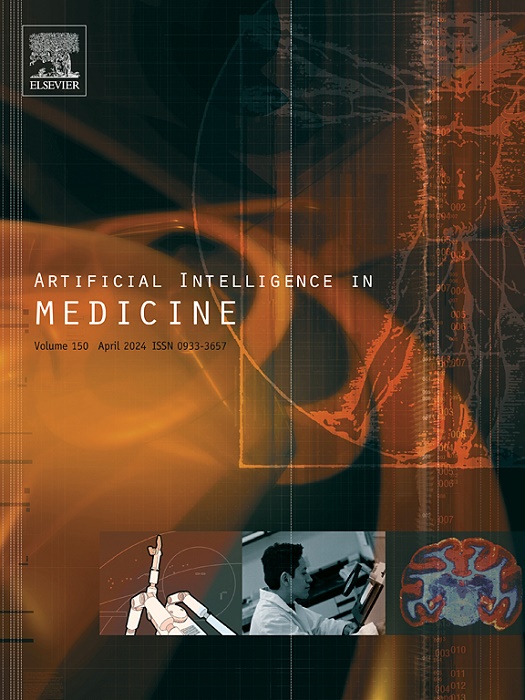多模态信号集成增强睡眠阶段分类:利用EOG和2通道EEG数据与先进的特征提取
IF 6.2
2区 医学
Q1 COMPUTER SCIENCE, ARTIFICIAL INTELLIGENCE
引用次数: 0
摘要
本文介绍了一种创新的睡眠阶段分类方法,利用多模态信号集成框架,包括眼电图(EOG)和双通道脑电图(EEG)数据。我们探索了各种特征提取技术的应用,包括短时傅里叶变换(STFT)、小波变换和原始信号处理,以及利用神经网络作为特征提取器。这种独特的组合使我们能够利用传统特征提取方法的优点,同时利用神经网络的力量来提高分类性能。我们的综合分类器评估包括一系列模型,包括长短期记忆(LSTM)网络和XGBoost。值得注意的是,我们的结果显示了XGBoost分类器的卓越性能,在Sleep-EDF扩展数据集上实现了84.57%的总体精度和78.21%的宏观f1分数,在israc - sleep数据集上实现了86.02%的总体精度和81.96%的宏观f1分数。特定类别的准确性突出了其熟练程度,特别是在检测尾流和N2阶段,巩固了其在分类器测试中的优势。这种特征集的合并,辅以主成分分析(PCA)的降维,强调了它在产生顶级分类结果中的重要性。将传统的特征提取方法与神经网络作为特征提取器相结合,建立了一个鲁棒的、全面的睡眠阶段分类系统,结合了两种方法的优点,提高了结果的准确性和可靠性。本文章由计算机程序翻译,如有差异,请以英文原文为准。
Multi-modal signal integration for enhanced sleep stage classification: Leveraging EOG and 2-channel EEG data with advanced feature extraction
This paper introduces an innovative approach to sleep stage classification, leveraging a multi-modal signal integration framework encompassing Electrooculography (EOG) and two-channel electroencephalography (EEG) data. We explore the utility of various feature extraction techniques, including Short-Time Fourier Transform (STFT), Wavelet Transform, and raw signal processing, alongside the utilization of neural networks as feature extractors. This unique combination allows us to harness the benefits of traditional feature extraction methods while capitalizing on the power of neural networks to enhance classification performance. Our comprehensive classifier evaluation encompasses a range of models, including Long Short-Term Memory (LSTM) networks and XGBoost. Remarkably, our results reveal exceptional performance with the XGBoost classifier, achieving an overall accuracy of 84.57 % and a macro-F1 score of 78.21 % on the Sleep-EDF expanded dataset, and an overall accuracy of 86.02 % and a macro-F1 score of 81.96 % on the ISRUC-Sleep dataset. Class-specific accuracies highlight its proficiency, particularly in detecting wake and N2 stages, solidifying its superiority among the classifiers tested. This amalgamation of feature sets, complemented by Principal Component Analysis (PCA) for dimensionality reduction, underscores its significance in yielding top-tier classification outcomes. The integration of traditional feature extraction methods with neural networks as feature extractors creates a robust and comprehensive system for sleep stage classification, offering the advantages of both approaches to enhance the accuracy and reliability of the results.
求助全文
通过发布文献求助,成功后即可免费获取论文全文。
去求助
来源期刊

Artificial Intelligence in Medicine
工程技术-工程:生物医学
CiteScore
15.00
自引率
2.70%
发文量
143
审稿时长
6.3 months
期刊介绍:
Artificial Intelligence in Medicine publishes original articles from a wide variety of interdisciplinary perspectives concerning the theory and practice of artificial intelligence (AI) in medicine, medically-oriented human biology, and health care.
Artificial intelligence in medicine may be characterized as the scientific discipline pertaining to research studies, projects, and applications that aim at supporting decision-based medical tasks through knowledge- and/or data-intensive computer-based solutions that ultimately support and improve the performance of a human care provider.
 求助内容:
求助内容: 应助结果提醒方式:
应助结果提醒方式:


